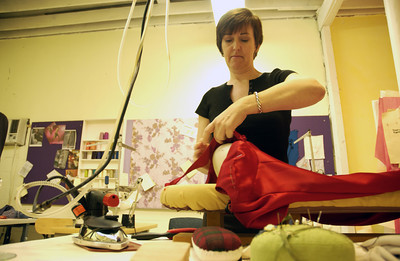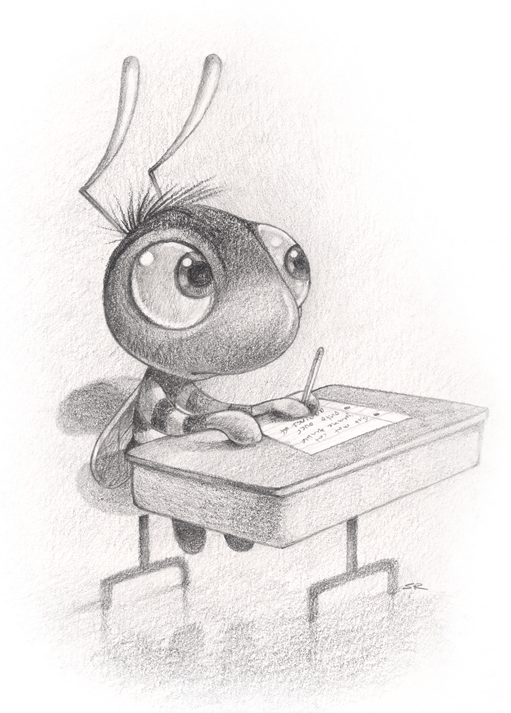Dating Issues: Conflicting Expectations, Mixed Signals, and the Three-Fourths Theory

An Observation by Cupid Valentino
Initial Disclaimer
It should be said right from the start that Cupid does not nor has he ever specifically endorsed any particular business over another. In a world which is becoming exceedingly more competitive on a global scale in the pursuit of money, Cupid feels that it is necessary to spread the love in hopes that the many upstart companies do not become engulfed in the behemoth mechanisms of the major conglomerates. That being said, it should not be held against Cupid that this particular observation was triggered by a trip to Wal-Mart. A retelling of this visit is merely the set-up for another one of Cupid’s observations concerning the always time-consuming struggle between the sexes.

The Introduction
One night at approximately 1:30am, Cupid joined the ever growing clique of insomniacs who consider Wal-Mart the after-hours hangout spot. Because you already know that most of Cupid’s nocturnal activities revolve around the act of love, there should be no inquiry as to why Cupid was there or to what he was purchasing for that matter. That is not the point. The main concern is that Cupid noticed on this particular occasion that this once familiar terrain had apparently benefited from some remodeling. Being that it had been a little more than a week since Cupid’s last visit, the change was indeed startling.
As Cupid made his way past the clothing section of the store, he noticed that the men’s section had vanished and been conveniently replaced by an area for little girls’ swimwear. Needless to say, this caught Cupid’s attention as he is often prone to buying undershirts from the now disintegrated men’s department. Upon further investigation (and might he say a slight feeling of panic), Cupid eventually discovered the lost men’s section in a distant corner behind a rather imposing row of bras and flip-flops.
Though at first taken aback by this occurrence, Cupid was not at all surprised that this phenomenon had at last reached the one place which had theretofore seemed immune. To what is Cupid referring? Cupid will now try to explain for his loyal fan base. The situation under observation describes the gradual shift in female advancement which we will coin as Cupid’s Three-Fourths Theory.
As always, be attentive.

Definition and a Simple Question
The reason it is called the Three-Fourths Theory is primarily an allusion to the marketing trends of today’s department stores and the fact that in most cases items pertaining to women comprise about three-fourths of any given store. If one will notice, the attention to the male consumer is gradually decreasing as the buying power of women becomes more potent. This would explain why every other commercial on television is about makeup, shampoo, tampons, or body-wash. Now, Cupid does not consider himself to be a man who specializes in bears or bulls, but he does notice the power of money and how it often correlates with seemingly unrelated aspects of relationships between men and women.
This marketing tendency reminded Cupid of a rather interesting dialogue in which he was engaged in the not-too-distant past. The question, proposed by a female associate, was indeed familiar and sounded something to the effect of - “Why is it so hard to find a decent guy?” At this point Cupid’s fans must be imagining the rather sly grin making its way across his charming visage.
Before revealing Cupid’s response he will now take the time to remind you that he is only stating his humble opinion and is in no way trying to offend anyone (as is most often the result, if not the intention). Looking into the eyes of this young woman, Cupid merely responded by saying, “Because you encourage the modern extreme.”
Analysis of the Three-Fourths Theory
The modern marketing machine bombards the public with images that cater to women’s (for lack of an existing word) vanity. This focus on appearances explains the situation in department stores because men have a tendency not to buy in as much bulk or variety as women.
The underlying social implication, however, suggests a more subtle shift in the way that society views men. As women gain more confidence and become more financially vigorous in society, the role of the man likewise changes. Being no longer needed as the sole provider for a family, one of the main functions of his identity as a man is encroached upon. Though women begin to take this “provider trait” upon themselves, pre-established social constructs concerning gender roles maintain that a man must assert his authority in some form. This is where the Three-Fourths Theory kicks in.
For the purposes of this observation, assume that there is a continuous, traditional gender spectrum divided into parts creating four sections. The first half belongs to women and is segmented as follows:
|________________________|________________________|
Complete docile Balanced Dominating
The second half belongs to men and is segmented as follows:
|________________________|________________________|
Effeminate Balanced Alpha Male
Keep in mind that this is a broad overview, and the labels reflect Cupid’s observations regarding popular social commentary on which some may vehemently disagree. The labels are also very conservative and have been censored to avoid the vulgarity of common vernacular.

The Three-Fourths Theory hypothesizes that, as far as traditional rules concerning gender roles are concerned, the present female spectrum has invaded the first half of the male spectrum, causing the entire range of the male identity to be much more condensed. The modern woman’s far right extreme now stands at the threshold where the balanced man was once the median of the male spectrum. Because of this, “womanly” characteristics now occupy three-fourths of the allotted range with more diverse classifications within that range. This leaves many men who still want to function as “men” with no choice but to move closer to the alpha male extreme because the previous median standard is now considered to be similar to what was once the left extreme (effeminacy).

The Result
Harking back to Darwinian theory, the manliest of men gets the woman. Unfortunately, in this day and time, the notion of what defines a man is approaching an extreme. The man now finds himself in a position where he feels it necessary to take more dramatic action to maintain his identity. The characteristics that once defined a balanced man (or gentleman), e.g., caring, concerned, polite, well-mannered, and respectful towards women, are now the characteristics that many modern women regard as signs of weakness. A few women will more than likely scoff at this point, but trends prove otherwise.
Mixed Signals
As a man (women, you have to have a
certain level of testosterone to truly understand this), his primary goal in life is
to make himself appealing to women. Whether explicitly or implicitly, a man’s
entire existence is determined by his interactions with women. It starts with
his mother and ends with whichever woman worries him into an early grave. Cupid’s
sure they have to do a little more research to verify that last statement, but
it is more than eighty percent experienced fact. Maybe.
The current generation was raised by women who better appreciated the characteristics of the balanced man and tried to give their sons some sense of what it was to be one. This is why older women have a tendency to look down upon younger men who have adjusted to the shift because men appear to have completely and intentionally disregarded all rules of gentlemanly etiquette in relation to women. Keep in mind that these are also the same women who are influencing younger girls and encouraging them to take full advantage of the new opportunities which will give them the ability to rid themselves of male dependency.

Likewise, the literature and media of previous ages that held the gentleman in high regard are still present and influencing the women of today. Women still read authors like Jane Austen, watch romantic comedies, and enjoy believing that “prince charming” will somehow present himself. Consequently, they hold onto an antiquated perception in their minds that their real-life approaches have undermined.
The gentleman no longer has an “effective” existence because it’s shameful to be regarded as such due to the Three-Fourths shift in perception. He comes across as pathetic, whiny, and effeminate if you actually see him on the street. Because of this trend, the men that women want (or say that they want) appear to be growing obsolete, and the would-be extremes seem to be the vast majority of what’s left.
Conclusion
Bringing this rather lengthy observation to a close,
Cupid will merely state that he believes that the Three-Fourths Theory is
steadily becoming more acceptable as time progresses. This may be attributed
mostly to the fact that few people consciously take notice of its existence.
With that said, it is only a matter of time before the men’s sections at Wal-Mart and every other store are again remodeled. This time, however, it will lead to a single guy carrying around a garment bag with three shirts, a pair of jeans, and one set of boxer shorts for the male consumer. In the meantime, the traditional roles of men will continue to be challenged in such a way that will inevitably inspire much frustration and tension between the sexes.

Cupid’s answer to his woman friend’s initial question is simple (though it acts as a double-edged sword). It’s not hard to find a decent guy. There are plenty of them around if one takes the time to truly notice. It’s just that attitudes towards these men have changed in ways that make them undesirable. Many women see well-intentioned compliments as lame advances and sensitivity as an invitation to permanent residence in the “friend zone.”

A gentleman’s best chance is to hope that the object of his affection is open to suggestion one night when she comes to him crying because her pseudo alpha-male boyfriend punched her in the throat after she insisted on watching Pride and Prejudice again and commented on how she wished he were more like Mr. Darcy.
Ha! That seems like a platonic friend’s fantasy, doesn’t it? It appears that Cupid and Jane Austen have something in common when it comes to telling a story. But it’s a shame how Cupid’s fiction is closer to modern reality.








